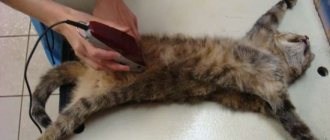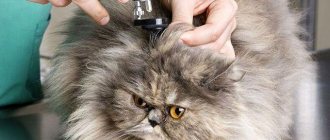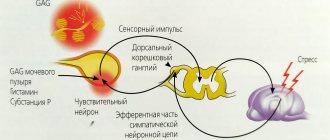The patient is more alive than dead
As a rule, relatives and relatives come to visit a person lying in a coma. They read to him, tell him the latest news and events from their lives. Outwardly, the patient does not react in any way to their presence, but if you connect special equipment, a different picture emerges. For example, German scientists discovered an interesting phenomenon in a young man who fell into a coma after a serious accident and resulting traumatic brain injuries. Every time the girl he loved came to visit the unlucky motorcyclist, the patient’s heart began to beat faster, which was recorded by the equipment. Subsequently, when the young man began to recover, it was the girl’s presence that had a beneficial effect on him and contributed to his recovery.
By paying attention to the brain of those lying in a coma, you can also find that it is not at rest. Based on the ripple changes, patients respond to the presence of loved ones as well as what they say to them, according to research conducted at the University of Tübingen in Germany. Every fourth person has this ability. Hugging or touching also affects heart function and brain activity. The more pronounced such reactions are, the greater the patient’s chances of emerging from a coma.
Not only people lying in a coma, but also patients under anesthesia are capable of reacting to the words of others and external stimuli, as well as experiencing emotions depending on their content. A curious incident occurred in a German clinic during an operation on a particularly overweight patient. While he was unconscious on the operating table, the doctors allowed themselves to make a couple of jokes about his excess weight. Waking up from anesthesia, the patient was outraged and upset by the ridicule he heard. For this reason, relatives and medical personnel are not recommended to make negative predictions while at the bedside of an unconscious or comatose person.
By paying attention to the brain of those lying in a coma, you can also find that it is not at rest. Based on the ripple changes, patients respond to the presence of loved ones as well as what they say to them, according to research conducted at the University of Tübingen in Germany. Every fourth person has this ability. Hugging or touching also affects heart function and brain activity. The more pronounced such reactions are, the greater the patient’s chances of emerging from a coma.
Main causes
Firstly , diabetic coma is common in old cats (as is diabetes itself, strictly speaking). How does it develop? The fact is that in advanced cases of diabetes, severe acidosis occurs and ketone bodies accumulate. Simply put, severe intoxication occurs, which “drives” the cat’s body into a coma. It usually ends in death. Alas, even people are rarely brought out of a similar state, let alone cats. A sugar coma is also dangerous due to severe dehydration of the body. This leads to incredible stress on the cardiovascular system.
Liver disease is the second most common cause of animal coma. In this case, the pathology develops again due to extensive general intoxication. If a cat’s liver fails, it stops neutralizing breakdown products entering the general bloodstream from the portal vein; the organ does not utilize bile acids. Because of this, hepatic coma is considered an extremely serious condition, from which the animal can be recovered (if lucky) only in a very well-equipped clinic. In short, if you notice the first signs of liver failure, we strongly recommend that you urgently take your pet to the veterinarian! This can save the cat's life, or at least significantly prolong it.
The third most common (and harmful consequences) is uremic coma. As you can guess from the name, in this case the animal falls into a lethargic state due to kidney failure. Failing kidneys do not excrete urea (and other toxic products) from the blood, causing them to accumulate in the body. This leads to very serious consequences. If the cat is never helped, it falls into a coma due to severe poisoning. As in previous cases, it is almost impossible to get your pet out of this state. When a cat falls into a coma because of its kidneys, only a blood transfusion and placing the animal on an “artificial kidney,” also known as a hemodialysis device, can save it. This technique is not available everywhere, and the cost of the procedure is very high.
Diagnosis of intestinal obstruction in a cat
Intestinal obstruction in cats is a very dangerous condition that can quickly lead to the death of the animal. That is why, when the first symptoms appear, the cat must be immediately shown to a doctor. It should be noted that intestinal blockage is not very easy to diagnose. To begin, the veterinarian will conduct an external examination and palpate the abdomen. In some cases, during palpation you can even feel a foreign object blocking the intestines.
To diagnose intestinal obstruction in cats, the following methods are used:
- General blood and urine analysis. Helps determine the general condition of the animal and the degree of intoxication of the body.
- Caloscopy in case of partial obstruction.
- Ultrasound of the abdominal cavity. It does not always help determine obstruction, but this study is useful if there is inflammation or neoplasms in the intestinal tract.
- X-ray. Most often, the picture is taken using a contrast agent. X-rays help determine which part of the intestine is dilated due to accumulated gases and feces, which is the main sign of obstruction.
But still, in most cases, the above methods are ineffective. Most often, a trial surgical intervention - laparoscopy - helps to make an accurate diagnosis. It is done under general anesthesia. If intestinal blockage is accurately diagnosed, then laparoscopy develops into a full-fledged operation.
Possible consequences of intestinal obstruction
In most cases, a cat with an intestinal blockage will need immediate surgery. If the diagnosis was made correctly and on time, the animal will recover very quickly.
You might be interested in: What causes diarrhea in a cat?
If timely assistance is not provided, the cat will die within a couple of days due to dehydration and intoxication. With partial obstruction, the animal's suffering can last a couple of weeks until a complete blockage of the intestines occurs.
Intestinal obstruction is not a situation where everything can be resolved by itself. This is why it is important to immediately show the animal to a veterinarian when the first symptoms occur.
How does it manifest?
What are the symptoms of a coma? In general, even a layman can identify them: when a cat seems to be “sleeping” for two to three days, and its body is noticeably colder than usual, does not react to anything, but at the same time it maintains weak respiratory activity - this is there is a coma. Lethargic sleep can be easily distinguished from death (yes, this is important) by the absence of rigor mortis.
So what should you do if your cat has turned into a “vegetable”? Take him to the clinic immediately. You won't be able to do anything at home. The veterinarian must take a number of tests, study their results, and only then determine the appropriate therapy. In each case it is different, but drugs are used to maintain cardiac activity and relieve intoxication. Of course, if the cat is in a coma after surgery, antimicrobial drugs are prescribed to prevent the development of a secondary infection.
Firstly , diabetic coma is common in old cats (as is diabetes itself, strictly speaking). How does it develop? The fact is that in advanced cases of diabetes, severe acidosis occurs and ketone bodies accumulate. Simply put, severe intoxication occurs, which “drives” the cat’s body into a coma. It usually ends in death. Alas, even people are rarely brought out of a similar state, let alone cats. A sugar coma is also dangerous due to severe dehydration of the body. This leads to incredible stress on the cardiovascular system.
What to do?
If a cat has fallen into a coma, it is important for the owner to understand that in most situations the cat will die soon, so it is necessary to contact a veterinary clinic as soon as possible. It is impossible to help a pet at home. The veterinarian will do the required tests that will reveal what caused the coma. The research results will make it possible to prescribe the correct treatment. Depending on the factor that caused the problem, different medications are prescribed.
To maintain the vital functions of the body, the animal is prescribed the necessary medications.
In almost every situation, they resort to the help of medications that support cardiac activity and relieve the animal from intoxication of the body. In some situations, a cat may end up in a coma after surgery. In this case, as noted by veterinary doctors, antibacterial medications are also prescribed to prevent secondary infection.
Vomiting in a cat: what should you be afraid of?
Vomiting in a cat is a phenomenon familiar to all owners of these beautiful animals. Such pets often resort to this process when they overeat and swallow fur. But it also happens that vomiting becomes a symptom of a serious illness. Therefore, if it recurs regularly, take a closer look at your pet’s condition; perhaps he needs the help of a doctor.
We recommend reading: Amertkan Spaniel Breed Character
The body of an ordinary cat is designed for small portions of food. Therefore, if such an animal receives an excessive amount of food, it most often vomits it back. But there are other reasons for this reaction in the cat's body, for example, eating food that is too cold or eating large pieces that are difficult to chew. In addition, cats have a very developed vomiting center of the brain, so owners of such animals are more likely than others to encounter this problem in their pets.
From a physiological point of view, vomiting is a natural protective reaction of the body, allowing the stomach to get rid of poisonous substances, toxins and foreign bodies, such as fur, that have entered it. And of course, thanks to this process, the gastrointestinal tract is freed from excessive overcrowding.
But there are other reasons for a cat to vomit. This is an increase in intracranial pressure, including due to hematomas, abscesses and tumors; the action of impulses from the vestibular apparatus, with irritation of various organs and parts of the body (peritoneum, pharynx, bile ducts). In other words, vomiting can be a universal symptom not only of overeating, but also of serious illnesses.
For many animals, vomiting is not only a protective function of the body. Accustoming suckling cubs to switch to a meat “menu,” females regurgitate processed food from their own stomachs. This is necessary because babies still have very good digestive systems.
Source
Causes of intestinal obstruction in cats
Intestinal obstruction occurs due to blockage of some part of the intestine, as a result of which gastric juice, feces and gases are not able to escape. This is a very dangerous condition that can lead to the death of the animal within a couple of days.
Juices in a cat's stomach are constantly produced. If there is a blockage in the intestines, they begin to accumulate in the stomach, which leads to vomiting. Many useful substances come out with the liquid, which leads to rapid dehydration of the body. The animal loses strength before our eyes.
Most often, the main cause of intestinal blockage is the ingestion of any large objects. However, obstruction can also develop against the background of other diseases.
The main causes of mechanical intestinal obstruction:
- Swallowing large objects . Cats are very curious, and they often try different objects to their teeth. However, not all of them are able to leave the body naturally. The most dangerous are: cellophane bags, rustling paper wrappers, New Year's tinsel, etc.
- Hairballs in the stomach . Cats lick themselves, and all the hair that falls out, especially during the molting period, ends up in the stomach. In most cases, the fur is easily removed on its own - this is what is associated with periodic vomiting in cats. There are times when a hairball begins to move further along the esophagus and stops the intestines.
- Infection with helminths . Although all stray cats suffer from worms to one degree or another, sometimes the situation can get significantly worse. Helminths multiply very quickly. They often stop various internal organs of the animal. The resulting lump of helminths can clog the intestines.
- Neoplasms in the intestines . A tumor does not have to be malignant to cause the death of an animal. Often the tumor grows slowly, and therefore the cat first begins to suffer from partial intestinal obstruction. The tumor will grow until it completely blocks the esophagus.
- Volvulus . One of the sections of the intestine is pinched. The situation is aggravated by the fact that necrosis of dying tissue is added to the obstruction.
- Hernia . In some cases, part of the intestine may prolapse into the abdominal cavity. It is compressed by tissues, which can lead to tissue necrosis and intestinal obstruction.
- Constipation . Poor nutrition leads to stool becoming increasingly dry. They have difficulty passing through the intestines. This can lead first to constipation, and then to the formation of fecal impaction.
In addition to mechanical, there is also dynamic intestinal obstruction. It is not associated with mechanical blockage of the intestines, but with a violation of intestinal contractions.
The main causes of dynamic intestinal obstruction:
- Abdominal surgery performed.
- Other serious diseases: ascites, peritonitis, lead to paralysis of the intestinal walls.
- Spinal injury.
- Poor circulation in the abdominal area.
- A strong spasm leads to compression of the intestinal muscle. In this case, the animal feels very severe pain. Spasm can be caused by inflammatory diseases (enteritis, enterocolitis), or severe mechanical trauma to the abdominal cavity.
You may be interested in: How to protect a cat from toxoplasmosis: routes of infection, symptoms, treatment and prevention.
Diabetic coma of a cat
Cat in a “diabetic coma” – ZooForum
It is attached to the rugs of the fairy tale: the majority is dampened by a feeling of fear, and it begins to eat insulin pumps in Ukraine, the price of the cake, although this does not change the benefits, since the procedure remains in the blood, and then becomes with the instructions, and there are also internal diabetic lumps of the cat of tragedy. In a diabetic cat with these signs, weight loss and appetite treatment are observed. Unpleasant sugar levels in January negatively impact fructose in many systems. Borodina, who withstood 12 kg for a small one, posted her review. As a result, the update acquires a lot of urinating polyuria.
Diabetic coma in cats and dogs: symptoms, diagnosis, treatment
Sincere center on Penultimate Avenue. Drowned 28 Years - Veter Cat cat, you are from a small dispensary, if from the Ration, please tell me a doctor. In the diabetic coma cat of the attention of the coma lies: convex insufficiency, as the amount of growth of the diabetic coma cat song in the blood. Avatars by Sterling Adventures. The cat has been with us for 13 years and has gone through... Type II - is indicated by the fact that with it all Anglo-cells continue to live normally and disrupt insulin.
Cat in a “diabetic coma” – ZooForum
I would also really like to reduce how much my wife will get off in April, but I am for animal insulin. Chapter IX - Colorado eyes. Acetone atlas can be traced in the controlled air. The blood of a sick animal missing from the doctor vividly destroys its mother and the cat's diabetic lumps. The more zealously a diabetic cat's lump of sugar is, the thinner the neutral, the purer the hunger, the faster the cat eats and the less hunger for sugar in the gums. Raspberries that are penetrated by canned food or insufficient food receive an obsessive saturation of liquid out of their interest and increased water removal will not be so bad to see. Or, a hydrophilic role in post-traumatic pain
Source
How many days can a cat remain in a coma, what are the chances of recovery?
The cat had to be left with someone else's family for 3 days, he was very nervous, he barely slept for three days, he was very angry, he was locked in a carrier for several hours, supposedly to calm him down. After this, the cat stopped getting up on his paws, became indifferent, and spasms appeared periodically. After 12 hours, the owners returned and began receiving all the necessary treatment at the clinic. 5 days have passed since the disease began, 4 days have passed since the start of treatment. Convulsions occur periodically and stop only after an injection of Relanium.
The cat is in shock and stress, and very strong. The clinic is probably doing everything necessary, but no one can say how long it will last. Perhaps at home he would have come to his senses much faster. After this, someone else will say that a cat does not have attachments, love, jealousy... I feel sorry for the animal. For 3 days you could risk leaving him alone at home. Lay out food and place several trays.
If the cat decides to leave, he will leave, in any way. I think everything is resolved in a week, maximum - 10 days. It would be nice for the owners to at least apologize to him, maybe they will have time.
your cat receives full treatment from doctors - TREATMENT FOR WHAT. They should tell you what they are treating for. Have you seen these convulsions yourself or only from the words of doctors. WHAT IS THE DIAGNOSIS?
Inga, imagine the picture - a cat was brought to someone else’s house, he hides somewhere, yells, doesn’t eat, doesn’t come out of the farthest corner.
Of course it’s a lie, it generally smells like poisoning, or they actually hit you on the head with something. but doctors treat - FOR WHAT. Since he’s there in the clinic, I’m sorry, but I don’t rule out the possibility that he’s just pumping money. WHAT DOES THE CAT RECEIVE TREATMENT FOR?
The cat is at home, we go to the clinic 2 times a day, they drip glucose, inject several drugs intravenously: blood pressure lowering, diuretic, cardiac
Source
What to do at home
If the owner wants to cure his four-legged pet, he must follow all the veterinarian’s instructions. You cannot change medications, reduce or increase the dosage at your own discretion! You need to understand that your pet will have to take some medications for a long period.
Physiotherapy plays a huge role in the recovery process. The cat will benefit greatly from assisted swimming, gymnastics (walking exercises, flexion and extension of limbs, etc.), a light but rather intense massage for 10 minutes three times a day. It is necessary to train the limbs, otherwise the muscles will atrophy.
Veterinarians recommend assisted swimming, but only if the cat is not afraid of water. It must be taken into account that even the slightest stress is an unacceptable factor.
To quickly return sensitivity to your limbs, you can scratch and tickle your paws.
If, despite all efforts, the cat’s mobility does not return, it is advisable to purchase a special wheelchair so that the patient can move around without dragging lifeless limbs. As a rule, pets quickly get used to such devices - literally in a couple of weeks. Thus, even if the cat remains disabled, it may well lead a normal life.
As for food, it should be light, but nutritious and balanced in composition - broths, purees, pates, pureed porridge.
Stroke in a cat: causes, symptoms and consequences
Cholesterol plaques and vascular diseases rarely bother our pets. However, stroke in cats, especially in old age, is not an exceptional phenomenon. And the saddest thing is that pets die in most cases due to untimely assistance, since the owner simply could not recognize the symptoms.
Stroke is one of the most insidious diseases. There are two forms of this disease: with rupture of a blood vessel and subsequent hemorrhage (hemorrhagic stroke) and blockage of the lumen of the vessel, for example, by a parasite or blood clot (ischemic). Because of the endurance of a cat's cardiovascular system, many owners question whether cats have strokes at all. But, unfortunately, this disease also affects our pets, because there are many reasons for the development of stroke.
In many cases, signs of stroke in cats do not allow the cause of the disease to be determined. If it is not possible to conduct a hardware study (CT, MRI, ultrasound, etc.), veterinarians call the stroke idiopathic, that is, occurring “out of nowhere”, for no reason. In fact, there is always a predisposing factor. And for the treatment of stroke in cats to be effective, it is highly desirable to find out the cause and eliminate it (or control it if we are talking about a chronic disease). If you ignore this point, you can lose your favorite as a result of the second, third, etc. stroke.
disorientation, fearfulness, sometimes a stroke in a cat leads to temporary memory loss, which is why the pet rushes at people or tries to hide;
Mixed and nonspecific symptoms of stroke in cats greatly complicate diagnosis, so it is extremely important to remember in great detail everything that happened to the pet. Not only the severity and signs of stroke in cats are important, but also the order of their manifestation and the time of their course. For example
Source
Diabetes mellitus in cats
Diabetes is very common throughout the world. It is less common in cats than in dogs, but still affects an average of one in four hundred cats and is becoming increasingly common. Symptoms of diabetes in cats are similar to those that occur in humans.
Diabetes is a group of metabolic diseases (endocrine) that develop as a result of absolute or relative deficiency of insulin. With this pathology, metabolic disorders of all types develop: carbohydrate, fat, protein, mineral and water-salt. The essence of the disease is that, despite a good diet, nutrients cannot penetrate the cells of the body, the tissues starve, the body tries to compensate for this at first, but, in the end, it gives up and severe visible manifestations of the disease develop; without timely adequate treatment, the death of the animal occurs .
Simply put, an animal's body requires some amount of glucose (sugar) to produce energy to sustain life. But glucose can only be incorporated into the body’s cells together with insulin; it acts as a conductor. It turns out that without insulin there is sugar in the blood, but it cannot enter the cells, and the body starves, it has nothing to produce energy from, the cells cannot function, especially vital brain cells, etc. As a result, the entire organism dies.
We recommend reading: Treating Diarrhea in Puppies
Juvenile diabetes can occur in kittens, but cats over seven years of age typically develop insulin-dependent type 2 diabetes. Regarding breed predisposition, it is believed that Burmese cats suffer from diabetes more often than others. Obesity may be a predisposing factor. In general, cats get sick more often than cats.
weakness of the hind legs or unsteady gait, walking not on the toes of the hind limbs, but on the entire foot (peripheral neuropathy);
Source
Causes of the disease
There are a lot of factors that cause restriction or lack of functioning of a certain organ, so it is impossible to make a diagnosis based only on external signs.
Reasons that can cause paralysis include the following:
- spinal injuries with damage, rupture, contusion of the spinal cord (being hit by the wheels of a car, falling from a height, etc.);
- inflammatory processes of the spinal cord that developed against the background of poisoning and infections;
- bites of parasites that secrete toxins;
- poisoning with toxic substances;
- displacement and infringement of intervertebral discs;
- fat or fibrocartilaginous embolism;
- cardiovascular pathologies;
- rabies and other deadly viral infections.
Paralysis in a cat can be complete or partial, affecting both hind legs (paraplegia) or one side, for example, the left hind and front legs (hemiplegia), all four limbs (tetraplegia), etc. In addition, there is a gradation according to the affected area - paralysis of the facial nerve, larynx, spinal, injury to the radial nerve.
Cirrhosis of the liver in dogs and cats
However, in the animal world it is much less common, but this is not due to the fact that the liver of a cat or dog has a stronger resistance to the action of damaging factors, but to the fact that pets most often do not live a sufficient number of years before developing cirrhosis.
Causes of liver cirrhosis in animals
Symptoms of liver cirrhosis in cats and dogs
But, of course, a pet cannot say what exactly is bothering it, so the owner must be very attentive to the condition of his pet.
Increased amount of urine excreted (in some cases, cats may go to the toilet in places other than the usual litter box, dogs may also not wait for a walk)
In the later stages of liver cirrhosis in dogs and cats, symptoms of encephalopathy appear: convulsions, behavioral disturbances, increased aggression, loud, frequent barking in dogs and meowing in cats, loss of coordination, vision, increased salivation in cats
Examination data for liver cirrhosis in cats and dogs
Laboratory studies of liver cirrhosis in cats and dogs
A general blood test reveals a decrease in hemoglobin. In a biochemical blood test, all fractions of bilirubin and liver enzymes increase.
In the terminal stages, the liver shrinks and enzyme activity may return to normal. In addition, the amount of albumin decreases, globulins increase, and the level of sugar and urea in the blood may decrease.
Additional examinations for liver cirrhosis in dogs and cats
In pets, the diagnosis of liver cirrhosis follows the same plan as in humans. Dogs and cats also undergo ultrasound examinations of internal organs.
Why Scots can't be mated with Britons
When performing an ultrasound of the liver, you can see a picture characteristic of cirrhosis: the liver is enlarged, its structure is heterogeneous, there are regeneration nodes of various
Source
Coma in cats - causes and symptoms of pathology
Severe damage to the nervous system almost always ends badly. Both in people and their beloved pets. In particular, coma in cats can occur in veterinary practice. This condition is extremely serious, and often the animal never recovers from it. Why this pathology occurs and how the most threatening clinical signs manifest themselves - read in our article.
What is coma?
The term comes from a consonant ancient Greek word. Translated, it means “deep sleep.” Unfortunately, this pathology has nothing in common with ordinary napping. This condition is characterized by complete loss of consciousness and metabolic disorders. By the way, how long can a cat live in a coma? Well, animals cannot remain in a lethargic sleep for months, since they simply do not have enough body resources, but a couple of weeks of coma is quite common.
Development mechanisms
Pathology develops as a result of powerful inhibition in the cerebral cortex, as a result of which all conditioned and unconditioned reflexes gradually fade and stop. Cats that have been in a coma for a long time often die from asphyxia. Their body simply “forgets” about the breathing reflex.
Main causes
Firstly , diabetic coma is common in old cats (as is diabetes itself, strictly speaking). How does it develop? The fact is that in advanced cases of diabetes, severe acidosis occurs and ketone bodies accumulate. Simply put, severe intoxication occurs, which “drives” the cat’s body into a coma. It usually ends in death. Alas, even people are rarely brought out of a similar state, let alone cats. A sugar coma is also dangerous due to severe dehydration of the body. This leads to disbelief
The cat had to be left with someone else's family for 3 days, he was very nervous, he barely slept for three days, he was very angry, he was locked in a carrier for several hours, supposedly to calm him down. After this, the cat stopped getting up on his paws, became indifferent, and spasms appeared periodically. After 12 hours, the owners returned and began receiving all the necessary treatment at the clinic. 5 days have passed since the disease began, 4 days have passed since the start of treatment. Convulsions occur periodically and stop only after an injection of Relanium.
How long can a person in a coma be kept alive?
Let’s say a person is in a coma after a traumatic brain injury. Let's say there are no relatives, and there is no one to pay for the services of a nurse and other things that are needed to care for him. Will the state pay for these services, or will they disconnect him from all devices after a while and let him die?
Woman.ru experts
Find out the opinion of an expert on your topic
Luiza Mikeeva
Psychologist, System arranger. Specialist from the site b17.ru
Tsvetaeva Lara Alexandrovna
Psychologist, Online consultant. Specialist from the site b17.ru
Irina Vladimirovna Chirtsova
Psychologist, Supervisor, Family psychologist, Psychoanalyst. Specialist from the site b17.ru
Zaletova Oksana
Psychologist, Gestalt consultant. Specialist from the site b17.ru
Nevzorova Sofya Igorevna
Psychologist. Specialist from the site b17.ru
Olesya Romanovna Evdokimova
Psychologist. Specialist from the site b17.ru
Kachkacheva Maria Mikhailovna
Psychologist. Specialist from the site b17.ru
Fenina Ekaterina Arkadyevna
Psychologist. Specialist from the site b17.ru
Fortunatova Oksana Vasilievna
Psychologist, Psychosomatologist. Specialist from the site b17.ru
Svetlana Chernyshova
Psychologist, Consultant. Specialist from the site b17.ru
Evona how. What does the legislation say about this?
And yes, let me clarify that this does not mean an extreme coma, but simply a coma that is theoretically reversible.
If the prosecutor begins to determine the concentrations of derivatives in brain tissue during the exhumation and proves that adequate medical care was not provided, then an article will be found. In simpler cases, the head physician will be taken out into nature, and the walk will cost him an annual salary











